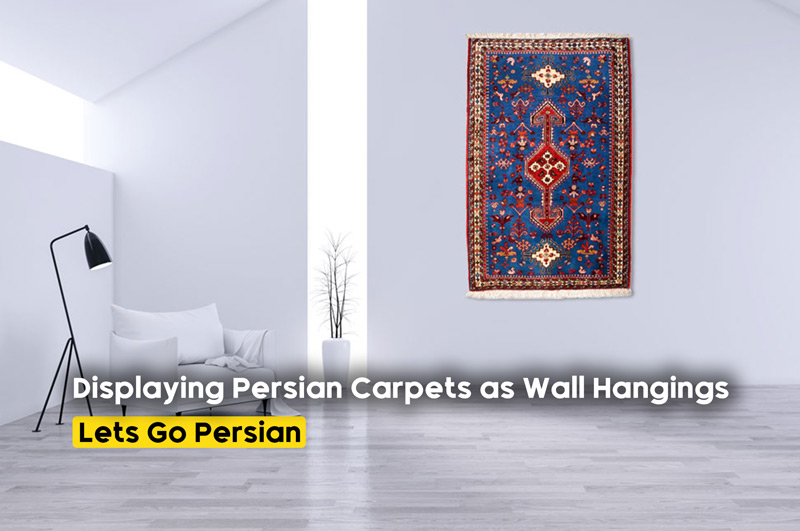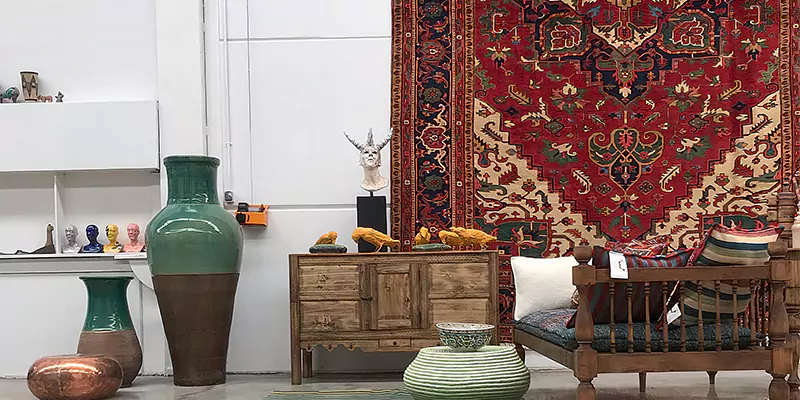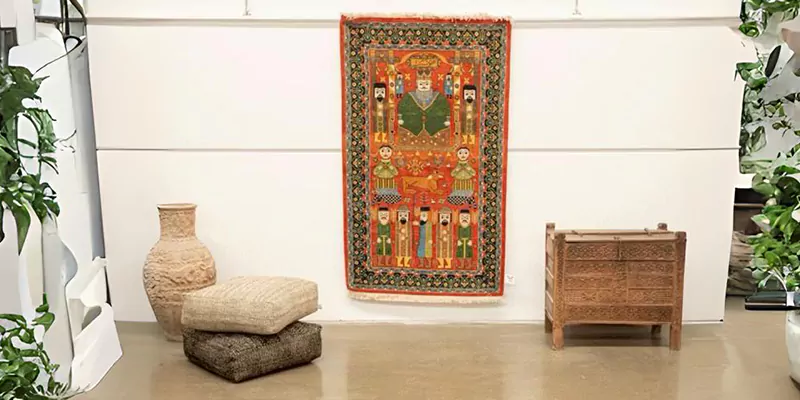
Persian Carpets VS Other Oriental Rugs

Starting a Persian Carpet Collection
Persian carpets are known worldwide for their exceptional craftsmanship, intricate designs, and rich history. While traditionally used as floor coverings, displaying Persian carpets as wall hangings has become a popular way to showcase these masterpieces as works of art. This guide explores the appeal of using Persian carpets as wall decor, offers practical advice on how to mount and display them, and shares tips for choosing the right carpet to enhance your space.

The Art of Displaying Persian Carpets as Wall Hangings
Why Display Persian Carpets on Walls?
Displaying Persian carpets on walls offers a unique and sophisticated way to bring color, texture, and heritage into a space. Here are a few reasons why it’s a fantastic option:
1. Highlighting Artistry
Persian carpets are woven artworks, with each piece taking months or even years to create. By placing them on a wall, you allow for an unobstructed view of the intricate designs, colors, and patterns that may go unnoticed on the floor.
2. Preservation
Carpets endure wear and tear when used as rugs, especially in high-traffic areas. Hanging them preserves the fibers and dyes, helping to maintain the carpet’s beauty and longevity.
3. Aesthetic Appeal
A Persian carpet can serve as the centerpiece of a room, adding an element of luxury and sophistication. Whether placed in a living room, study, or hallway, the carpet brings an exotic and cultural touch to the interior.
4. Space Transformation
Persian carpets bring warmth, color, and character to walls, creating a cozy and inviting atmosphere. They work well in various design styles, from rustic to modern minimalist, adding depth and texture to a room’s decor.

Persian carpet on the wall
How to Mount and Display Persian Carpets as Wall Hangings
Properly hanging a Persian carpet requires care to ensure it remains secure and undamaged. Here’s a step-by-step guide to help you do it safely and effectively:
1. Choose the Right Mounting Method
There are several ways to mount a Persian carpet on the wall, and the choice depends on the carpet’s weight, size, and the wall material. Here are some popular methods:
- Rod and Sleeve: This is a reliable method where a sleeve is sewn along the back of the carpet’s top edge, and a rod is inserted through it. The rod is then mounted to the wall, allowing the carpet to hang naturally and evenly.
- Velcro Strips: Velcro is a suitable option for smaller, lighter carpets. Attach one side of the Velcro to the back of the carpet and the other side to the wall. This method is discreet and easy to apply or remove without causing damage.
- Clips or Clamps: For larger or heavier carpets, using decorative clips or clamps can be an effective way to hold the carpet securely. These clips attach to the carpet’s top edge and can be mounted on nails or hooks in the wall.

Persian carpet on the wall
2. Positioning and Alignment
- Center the Carpet: Ensure that the carpet is centered if it’s a focal point in the room. Measure the space around it to create a balanced look.
- Height Considerations: When hanging the carpet, avoid placing it too high or too low. Aim for eye-level placement, similar to a piece of artwork, so that viewers can appreciate the details.
3. Using Proper Lighting
Proper lighting brings out the colors and textures of the carpet, making it an eye-catching feature in the room.
- Avoid Direct Sunlight: Sunlight can fade the dyes over time, especially with natural vegetable dyes often used in Persian carpets. Place the carpet on a wall that doesn’t receive direct sunlight.
- Use Accent Lighting: Spotlights or track lighting directed at the carpet can enhance its colors and patterns, creating a striking visual effect in the evening.

Persian carpet on the wall
Choosing the Right Persian Carpet for Wall Display
Not all carpets are ideal for hanging, and certain styles work better on walls than others. Here’s what to consider when selecting a Persian carpet for display:
1. Size and Proportion
Choose a carpet that fits the wall’s dimensions and complements the room’s size. A large, bold carpet can anchor a spacious wall in a living room or hallway, while a smaller, more intricate piece might suit a bedroom or study.
2. Design and Pattern
Carpets with central medallions or pictorial designs work especially well as wall hangings. Their symmetrical, visually balanced patterns draw the eye to the center, making them appear like framed art pieces.
3. Color Scheme
Consider the room’s color palette when selecting a carpet. Rich reds, blues, and greens found in Persian carpets add warmth and vibrancy to neutral spaces, while softer tones blend beautifully in minimalist or contemporary interiors.
4. Historical and Cultural Value
Displaying a Persian carpet with unique or historical significance can add cultural depth to a room. Carpets from specific regions, like Tabriz or Kashan, often have signature designs and craftsmanship that showcase regional artistry.
Decorating Ideas: Persian Carpets as Wall Hangings
1. In the Living Room
A large Persian carpet on the main wall of a living room creates a beautiful focal point, drawing attention and setting the tone for the space. Match it with low, neutral furniture to let the carpet shine as the central decorative piece.
2. In Hallways or Entryways
A narrow, elongated carpet in a hallway or entryway adds warmth and elegance. Guests are immediately greeted with a unique artistic display that hints at the cultural sophistication of the home.
3. In a Study or Library
Adding a Persian carpet to a study or library wall creates a cozy, intimate feel. The rich colors and patterns evoke a sense of knowledge and history, making it an ideal choice for spaces dedicated to reading and reflection.
4. As a Bedhead Accent
Instead of a traditional bedhead, a Persian carpet can be hung on the wall behind the bed. This transforms the bedroom into a rich and inviting space, with the carpet providing a colorful and luxurious backdrop.
Maintenance Tips for Wall-Hung Persian Carpets
Once the carpet is mounted, it’s important to maintain it to ensure it retains its beauty over time:
1. Regular Dusting
Use a soft-bristled brush or vacuum with a gentle attachment to remove dust. Doing this every few months will prevent dust from settling into the fibers and maintain the carpet’s vibrancy.
2. Avoid Direct Heat and Moisture
Persian carpets are sensitive to temperature changes and humidity. Avoid hanging them in areas with high humidity, such as bathrooms, as moisture can weaken the fibers over time.
3. Rotate the Carpet Periodically
If possible, rotate the carpet every few years. This helps distribute any wear and prevents uneven fading, especially if there’s any indirect light exposure.
4. Professional Cleaning
Consider professional cleaning every few years to keep the carpet in pristine condition. Choose a cleaner experienced with hand-woven carpets to avoid potential damage.
Conclusion
Hanging Persian carpets on walls transforms them from simple decor items into stunning visual centerpieces. These carpets tell stories of history, culture, and artistry, making them ideal for wall displays where their beauty can be fully appreciated. By carefully choosing, mounting, and maintaining a Persian carpet, you can bring warmth, elegance, and cultural significance to your home, creating a living space that reflects both sophistication and heritage.



















